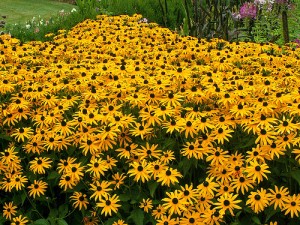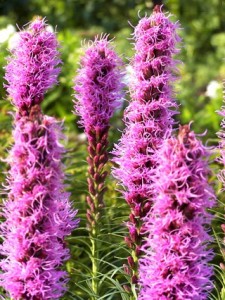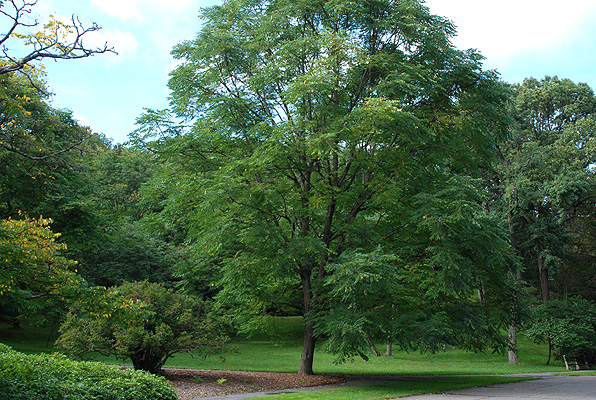Remember the drought? During most Indiana summers, we experience at least a few months of warm, dry conditions. Although this summer so far has been on the wetter side, we don’t have to think too far in the past to recall the severe drought of 2011 followed by an extended period of dry weather during the summer of 2012. Even last summer provided a few long weeks with little rain. These dry periods have taken a toll on many trees, shrubs, and perennials in our landscape.
 As these plants are replaced, some consideration should be given to plants that have a higher tolerance to dry or drought type weather conditions. Most plants prefer a moist, well drained soil. However, provided that a plant is otherwise healthy, has had adequate time to establish roots (generally one to two years from planting), is provided appropriate cultural conditions (good drainage, aeration, mulch, and moderate fertilizer), plants listed as drought tolerant should be able to withstand a moderate period of dry weather with limited moisture from irrigation or rainfall.
As these plants are replaced, some consideration should be given to plants that have a higher tolerance to dry or drought type weather conditions. Most plants prefer a moist, well drained soil. However, provided that a plant is otherwise healthy, has had adequate time to establish roots (generally one to two years from planting), is provided appropriate cultural conditions (good drainage, aeration, mulch, and moderate fertilizer), plants listed as drought tolerant should be able to withstand a moderate period of dry weather with limited moisture from irrigation or rainfall.
Indiana native species should be considered first as they have deeper roots, are accustomed to our clay soils, and are better suited to tolerate the fluctuation in our weather patterns. Utilizing these plant species can also go a long way in helping reduce the need for increased irrigation during dry periods. A well managed irrigation system should be controlled based on plant species, weather conditions, and soil type. Thus drought tolerant plants can aid in the amount of water necessary to keep them alive during the hotter, drier summer months.
The following is a short list of native tree, shrub, and perennial plants that one might consider :
- Gymnocladus dioicus – Kentucky Coffee Tree

- Nyssa sylvatica – Black Gum
- Quercus imbricaria – Shingle Oak
- Cercis canadensis – Redbud
- Hamamellis vernalis – Whitchazel
- Lindera benzoin – Spice Bush
- Rhus Glabra – Sumac
- Monarda – Bee balm
- Rudbeckia – Black Eyed Susan
- Echinacea purpurea – Coneflower
- Liatris – Gay Feather
- Coreopsis – Tickseed
Use of these plants will not only help during dry weather conditions, but will reduce the need for frequent watering, and are considered lower maintenance varieties. As our free time continues to decrease, and we experience extended dry periods, the attributes of these plant species give us more cause for inclusion in our gardens and landscape.

